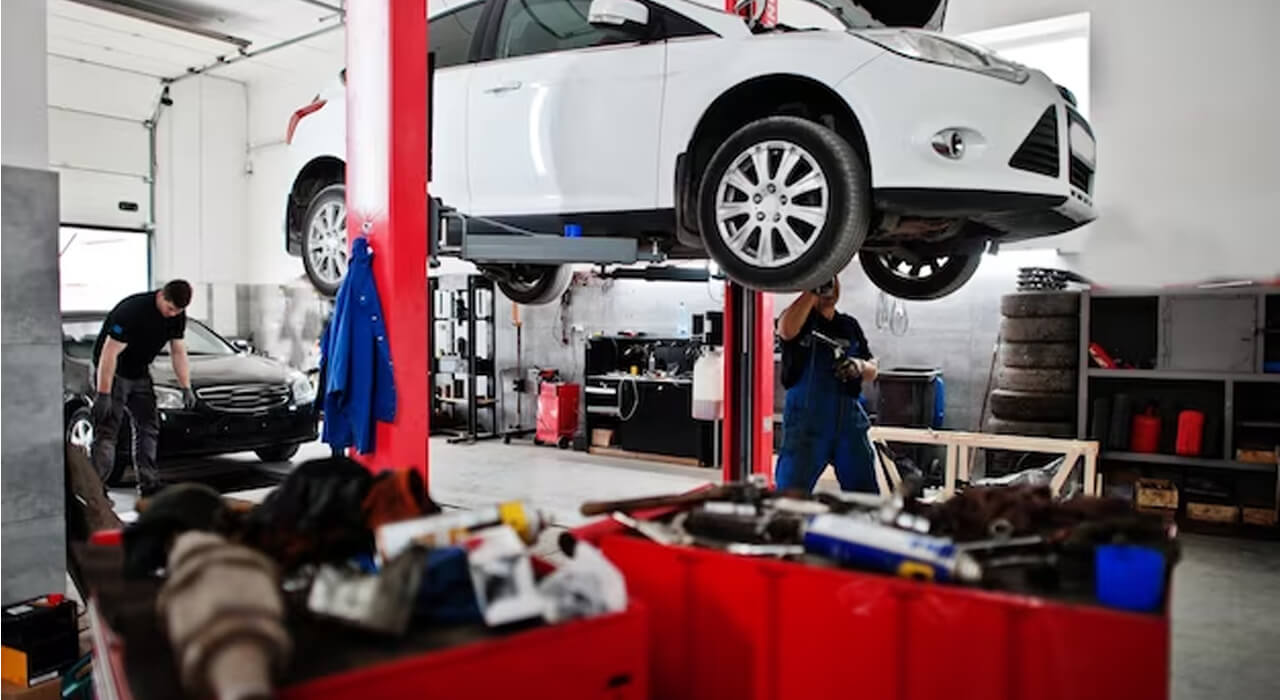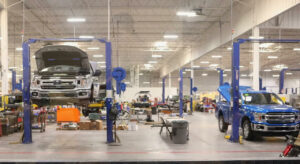A regular preventive maintenance approach helps ensure a vehicle’s longevity, performance, and value. By creating and sticking to a consistent maintenance schedule, vehicle owners protect their investment and have peace of mind, which comes with having a reliable car.
Neglecting basic maintenance tasks can result in experience repairs, dangerous driving conditions, and reduced performance. The maintenance scheduling of one’s vehicle can depend on various factors, including age, make, model, and driving habits.
Scheduled Maintenance
Scheduled maintenance is a significant aspect when it comes to vehicle ownership. The objective is to reduce equipment failure, reactive car maintenance, and backlogs. By maintaining a vehicle on time, it allows for better allocation of resources and problem interception. Typical routine maintenance tasks include oil changes, power steering, and brake fluid checks. It also entails wheel alignment and balancing. These activities are required after the vehicle has covered a certain number of miles, depending on make or model, countering the apparent wear that has accumulated issues.
Typically, an oil change costs $20 to $75, while brake pad replacement costs owners $115 an axle. Wheel alignment and balancing are minor checks that would cost an estimated $60. Doing car maintenance early or on time saves the cost of repairs that would eventually occur if the vehicles are left running as they are for too long. For example, if the oil is not changed on time, the fluid becomes ineffective as a greasing agent, causing overheating or engine seizing in worst-case scenarios. Similarly, tires that are left out of alignment predispose a vehicle to accidents, especially at highway speeds.
Reactive Repairs
Reactive maintenance only happens when a component fails. It may not seem problematic on paper because it means dealing with an issue only when it arises. However, the reactive approach might cost more as the parts may be damaged from wear and require a higher level of repair. In worse cases, these parts may even need replacement.
One example of reactive maintenance is changing the engine oil once it overheats. Though the vehicle will still be able to function regularly, it will not be effective. If the vehicle owner persists in using the old engine oil, they will shorten the engine’s longevity, resulting in detonation. Similarly, not replacing a battery when the recommended period expires, the vehicle may stall occasionally or be unable to start again.
Comparing the cost strategies for maximizing vehicle longevity
Performing scheduled maintenance costs the owner less money compared to a reactive approach. Typically, an oil change would cost $45 on average, but if a reactive maintenance approach is used, engine repair or replacement costs anywhere from $200 to $1,000. Similarly, not doing a $50 wheel alignment fix on the car may lead to a worn tire, which must be replaced at $100 to $200 per tire, depending on the brand.
Also Check: Cars That Get 40 MPG Under $10K
Over the long term, reactive maintenance costs the vehicle owner much more in repair as well as part replacement. It is more convenient, of course, though, as scheduled maintenance may be warranted when it is not financially favorable to do so.
Strategies for maximizing vehicle longevity
There are different approaches that would help owners achieve better longevity for their vehicles. The goal is to balance proactive but flexible measures so repairs are less costly and maintenance is sustainable.
Balancing scheduled maintenance and reactive repairs
Scheduled maintenance may not always be possible, especially if one is on a budget, and it can be inconvenient if the checks have to be done consecutively. However, that does not necessarily mean moving to the other extreme.
Suggestion: List of The 8 Most Reliable Luxury Car Brands in American Market 2023
Both scheduled maintenance and reactive approaches can be used in a balance for optimal efficiency. The vehicle owner might prioritize the most urgent or significant car maintenance proactively while the lower-level issues are handled reactively. It has a lower chance of long-term damage while avoiding maximum short-term costs.
Creating a maintenance schedule and budget
Vehicle owners can also create a schedule and budget that works for them. Maintenance also depends on budget, so owners can go for the level that combines need and personal ability. They can also set a schedule of the high-priority car maintenance requirements, such as engine oil change after 3000 miles, while brake pad repair or replacement should be done every year. If the person commutes 3000 miles per six months, that means setting aside an oil change budget every half year. The same would go for pads, gearbox checks, and fan belt maintenance as needed.
Importance of proactive measures
Proactive approaches can seem tedious, but they are lifesaving. Vehicle parts are prone to wear following continued use. Unfortunately, parts that are meant to be replaced in time cause a cascade of other issues when they are neglected. A minor issue resulting from an unmaintained radiator can cause heating, leading to engine problems. Hence, these parts need regular inspection to catch a problem when it is still small and manageable.
Educating vehicle owners on the benefits of scheduled maintenance
Scheduled maintenance does not only help owners keep the car operational. It is often needed to keep a manufacturer warranty intact, so this can save them money. No manufacturer will agree to cover a vehicle’s repairs if it finds out it has been years since the owner performed an oil change.
It is also important for owners to know about scheduled car maintenance to perceive the right time to change parts and budget accordingly. That removes the anxiety and compromise that comes with not properly planning repairs. It makes the process efficient and reduces the chances of owners being overcharged for short-notice orders.
Keep Your Car Running Smoothly with Scheduled Maintenance
Scheduled maintenance is highly beneficial to vehicle owners and should be a significant part of how each repair. It is unavoidable partly because of the long-term costs of neglect, reactive repairs cause the vehicle. Scheduled maintenance may have short-term costs associated, but it can be balanced alongside reactive approaches to bring flexibility.
This approach also reduces the upfront costs to a vehicle owner on a budget. That being said, scheduled maintenance would be useful for owners relying on the warranty in case of significant repairs. The manufacturer is more likely to provide repairs or replacements if they determine that scheduled maintenance has occurred.





